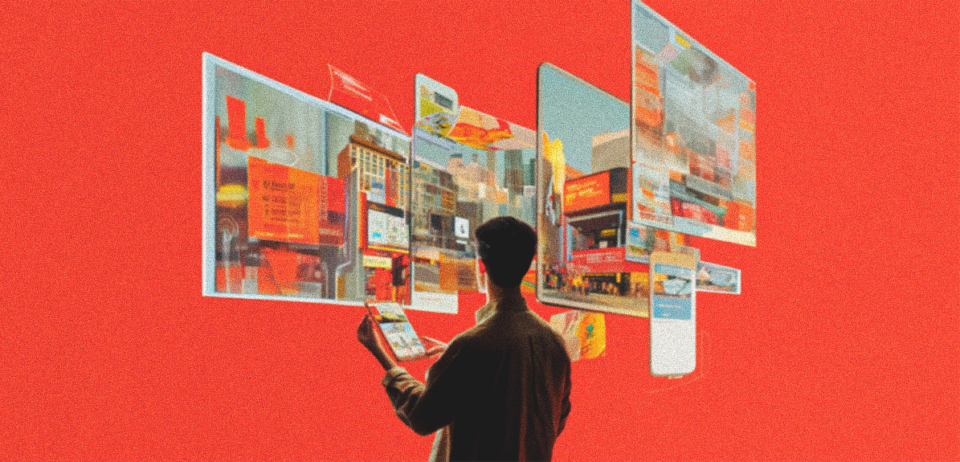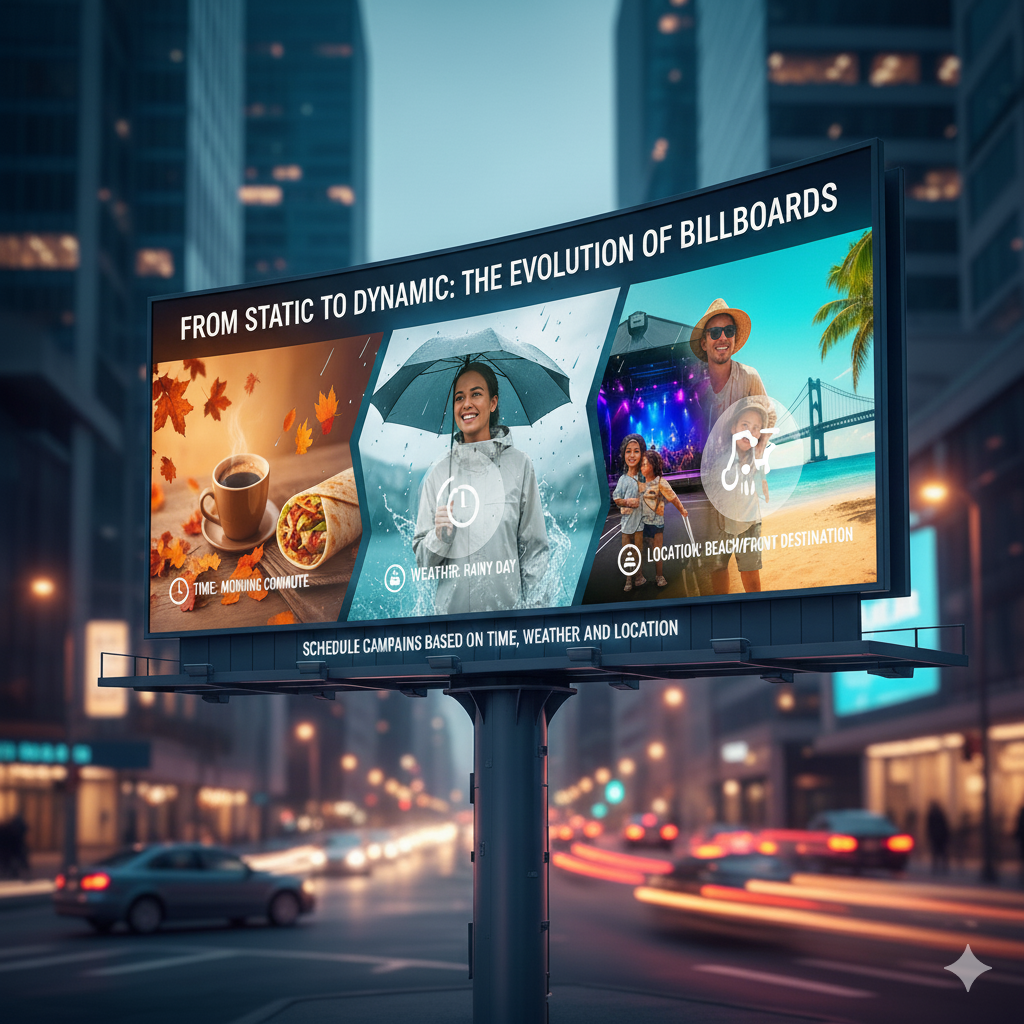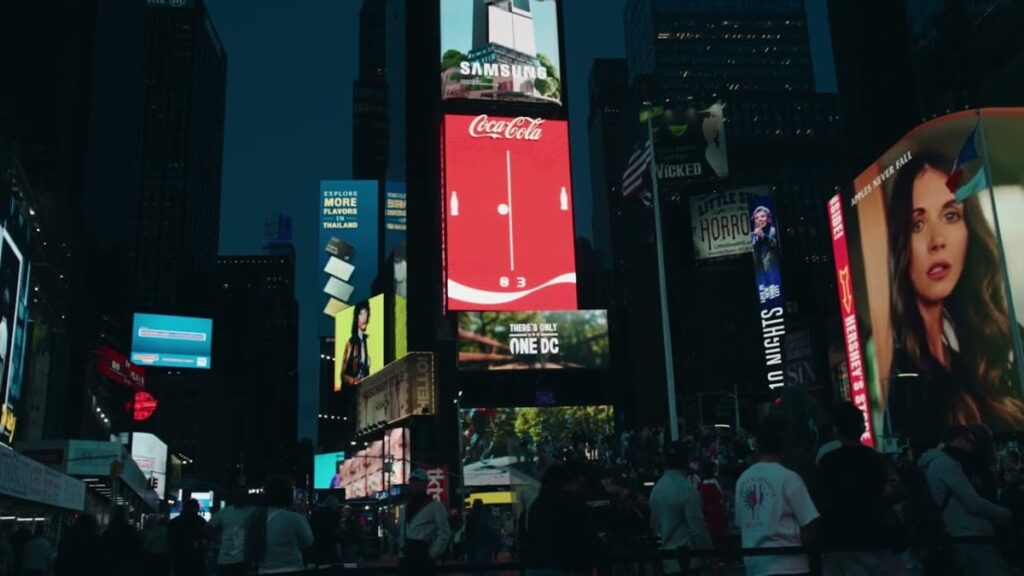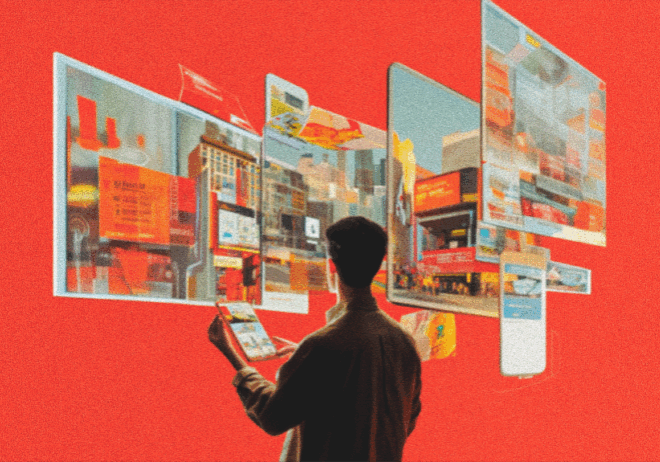
Billboard Advertising Gets Smart: When Outdoor Meets Digital Magic
Outdoor advertising has changed over the years. Traditional OOH has evolved in the digital era, without losing the essence of what made billboards iconic in the first place. Today, we are in the age of Billboards 2.0, the time when traditional billboard advertising meets digital interactivity to build valuable experiences that engage audiences beyond the street level.
The streets we walk down, the interstates we drive on, and the corners we look down on are no longer just physical environments; they’re possibly valuable opportunities for a brand to engage, entertain, and inform a consumer in the moment.
So, how does this new-age billboard format work for marketers (the billboards, not the consumers), and why are marketers spending so much money on outdoor advertising compared to what used to work? Let’s take a look.
From static to dynamic: The evolution of billboards
For over a century, traditional billboard advertising has been a primary means of marketing. Classic billboards were brash, straightforward ads that depended on repetition and exposure to capture the consumer’s attention. Although effective, static ads lacked interaction or personalization.

The arrival of digital billboards advanced the traditional one-way communications model by enabling brands to:
- Show multiple ads on a single screen in rotation
- Schedule campaigns based on time, weather, and location
- Use vibrant, eye-catching colors for images and motion graphics.
Even still, the communication gave way to a one-way model with digital displays. Brands sending out messages and consumers simply digesting their messages.
What’s next? Interactive billboards—which will utilize AI, IoT, AR, and mobile integration. That enable consumers to experience ads in a personalized, immersive, and measurable manner.
The effectiveness of digital interactivity
Advertising on digital billboards is changing the way people interact with outdoor advertising. Digital billboard advertising collects feedback from the weather, city, or consumer moods in order to create a tailored message. This is how interactive outdoor advertising makes its mark:
- Touch and motion sensors: Some ad and outdoor signs now allow consumers to interact with the ad—playing games, activating animations, or interacting in real time with the advertisement message.
- QR codes and mobile-link: A quick scan of the QR can unlock specials, exclusive videos, or games—creating a connection between the offline and online brand experience.
- Augmented reality and virtual worlds: Travel and fashion brands are enhancing the consumer experience offering AR capabilities where the user can “try before they buy”—a simulation experience of the product or destination on their smartphone.
- Real-time experience feeds: Modern billiboards can now update messaging based on real time traffic, weather, or social trend—providing brands with the opportunity to keep their communication timely, relevant, and interesting.
In short, digital engagement not only turns passive viewers into active participants but processes digital engagement tools to deal with outdoor advertising in most future environments.
Real-time data: Advertising smarter, not harder
The greatest benefit of the latest trends in digital billboards is the access to real-time data. Brands can track foot traffic, update content in response to the weather, trending topics, or audience demographics, and change messaging multiple times in a single day. For example, a coffee brand might run an ad for a hot latte in the morning when it is 30 degrees out, and by afternoon, it has switched the messaging to beers or iced drinks on that same billboard.
This factor is influential in the cost of advertising on a billboard. While static billboards force brands to sign long-term advertising contracts and plan their messaging far in advance, digital advertisements can be purchased strategically or on the fly thereby improving their ROI. Some digital billboard ad platforms even sell programmatic outdoor ads where the they can be bought and adjusted automatically much like online display ads.
Trends in digital billboards
Here are a few trends in digital billboards that will shape the future of outdoor advertising:
- Tailored Messaging: Billboards are now generating content that specifically speaks to someone based on data like traffic patterns, weather, and demographic information.
- Engagement Play: Billboards are now requesting participation from consumers in various forms—from games to AR experiences.
- Social Reach: These campaigns incorporate elements to encourage sharing online—turning an outdoor advertisement into a shareable pay-per-click venture.
- Programmatic Purchasing: Brands can now purchase and optimize ad spaces/slots in real-time utilizing programmatic technology.
- Eco-Friendly Technology: Digital displays are now using eco-friendly LED technology and utilizing smart scheduling to reduce the environmental impact.
Billboard campaigns that were successful in 2025
Interactive billboards will change outdoor advertising. From AR try-ons to real-time updates, businesses are changing sidewalks into unique and entertaining experiences, capturing people’s attention in new ways.
Coca-Cola, Interactive trivia moments—Times Square, New York City
In May 2025, Coca-Cola turned its iconic Times Square board into a playable gaming experience. Passersby could use their smartphones to play a retro-style “Pong” game, turning the billboard into a dynamic and interactive space. The initiative was a way to entertain consumers without losing sight of the Coca-Cola “Real Magic” ethos.

Levi’s, Live in Levi’s AR billboard—Toronto
Levi’s billboard experience at CF Eaton Centre in Toronto allowed shoppers to utilize their smartphones to see themselves wearing Levi’s clothing in augmented reality. Shoppers were kept engaged in a unique shopping experience that was relatively new to the public and also served to walk shoppers into adjacent stores, and also of course, Levi’s.
Netflix’s “Stranger Things” 3D Billboard in Los Angeles
Netflix brought the Upside Down to life with a 3D billboard featuring creatures bursting out of the screen. The realistic motion effects captivated audiences, ignited excitement on social media and, in many ways, illustrated how powerful outdoor advertising can be.
The ROI enigma: Is it worth the investment?
As technology continues to advance, marketers often ask this question: What is the ROI from billboard advertising in this era? Although the price of billboard advertising seems expensive, the interactive & data-driven features of Billboards 2.0 offer measurable returns on investment. Real-time engagement metrics, social media amplification, and increased foot traffic provide a consistent & transparent sense of effectiveness for brands; something the prior static boards could never quantify.
Additionally, as programmatic buying has emerged, brands can test campaigns & rotate creatives while rapidly scaling successful content without having their dollars wasted on advertising & content does not meet their goals or target events, thus wasting less dollars & being more efficient with campaigns than static boards of the past.
The future of outdoor advertising
The line between digital and physical advertising is blurring. Outdoor ads are becoming part of the connected experience, merging real-world presence with digital interactivity. Future digital billboard trends hint at even deeper personalization, AI-driven content optimization, and seamless integration with mobile apps and wearables.
Imagine walking past a billboard that not only recognizes your city and the weather but even offers personalized recommendations based on your recent online activity. Or a display that tracks real-time social media engagement, displaying user-generated content dynamically. The possibilities are endless—and brands that embrace these innovations will gain a massive competitive edge.
Cut to the chase
Interactive billboards can engage audiences—but concerns such as cost, technological issues, and privacy are real. Also, too many gimmicks can repel the audience. Brands that provide genuine while creatively engaging consumers. Are you ready for your street to be interactive?

